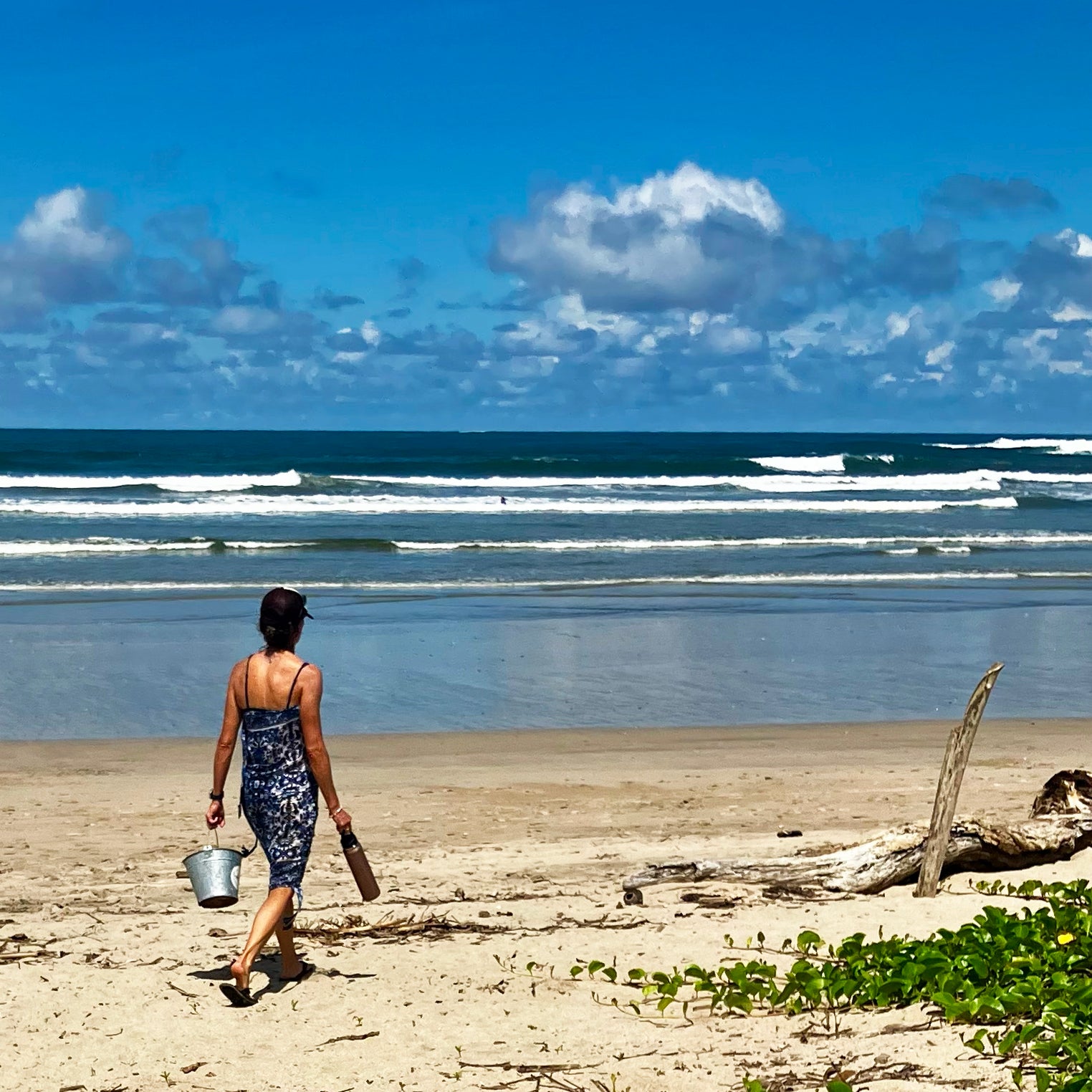Growing up in San Diego, I used to beachcomb with my mom. We’d walk slowly, staring down at the sand at our feet with the sound of waves and seabirds in the background, looking for sand dollars and interestingly shaped shells. It was calming. Mesmerizing. We’d lose track of time.
So when I found myself sunburned this past summer after an intended 15 minutes of picking up trash on the beach that turned into a calming, mesmerizing hour of filling up a tin pail provided by an environmentally conscious surf shack, I realized beach cleanups could be the new beachcombing.
It reminded me of a time, a couple of summers ago, when I had become equally immersed in scouring the ocean floor with a mask and snorkel, looking for plastics and collecting them in a tightly knit mesh bag. At that beach clean-up, organized by Surfrider Oahu, I thought seeking trash while snorkeling could be the new underwater treasure hunting.
Both activities have implications far beyond pleasant hours in or near the sea, making me feel good about how I spent my time even after it had past.
If you buy through our links, we may earn an affiliate commission. This supports our mission to get more people active and outside. Learn more.
Start ripples
“I think most folks are aware that there’s a lot of plastic in the ocean and that it is a problem,” says Surfrider Foundation’s Plastic Pollution Initiative Senior Manager, Jennifer Savage who points to that came out last year about plastic-infused ocean spray, and about the amount of plastics that end up in our seafood.
OceanCycle, an organization also dedicated to combating the problem of ocean plastics, reports that “most ocean plastic cannot be recycled” due to degradation by salt, sunlight, toxins, and microorganisms. They also report that “over 11 million tons of new plastic enters the ocean each year.”
I asked Savage what would happen if everyone, on every beach—whether we’re visiting or living there (but especially if we’re visiting)—made a habit of finding and removing plastics in the sand and sea.
Savage says that while beach cleanups only make a dent in a huge problem, the ripple effects—even from individual efforts—can be powerful. “Say we have a beach cleanup, and people find a lot of plastic forks and spoons,” she says. “We have a program called ‘Ocean-friendly Restaurants’ where we get restaurants to stop using single-use plastics. And then we can go to decision makers, local, state, or county, and say, ‘Hey, we found 10,000 plastic spoons on the beach in the past year. We’ve got to make a law about this. We have the data to back it up.'”
I also asked her about outdoor gear companies making gear out of recycled plastics both found in the ocean and single-use plastics that would otherwise end up in the ocean. While she recommends trying to keep the gear you have instead of feeding demand by buying more gear, even if made from recycled materials (point taken), she agrees that shopping from companies making an effort is wise.
If we are buying new gear—and, we all do—we have choices. Why not choose products that are utilizing either recycled ocean plastics, when possible, or post-consumer plastics that would otherwise end up in the ocean?
Being reminded that I friggin’ love the ocean and the threat that plastics pose, I set out on a mission to find some great outdoor gear made from recycled plastics, and also to minimize my family’s contribution to the greater problem. While I’m not the most noble in either of these arenas, I think it’s worth the effort. Here’s some I’ve found:
Buy gear that helps reduce ocean plastic
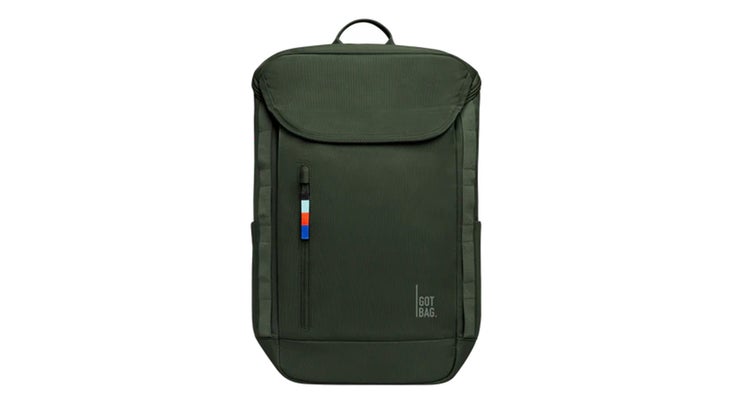
GOT BAG Pro Pack
GOT BAG facilitates 17 clean-up programs in Indonesia, where the plastics problem is disproportionately greater than the rest of the world. Through their program called, recovered, usable PET (polyethylene terephthalate) plastics are made into GOT BAGS, while other plastics are diverted to appropriate recycling centers.
The well-designed has proved fantastic for running errands, bike commuting, and traveling. Its capacity (up to 25L) carries even large, odd-shaped groceries while a small, fleece-lined pocket keeps my sunglasses from getting scratched by my keys (a constant battle). A side-access laptop sleeve, water bottle holder, two exterior pockets, dedicated (hidden) passport pocket, and luggage strap shine when traveling by plane, train, or bike. One knock: The sternum strap tends to detach from the shoulder straps, but can be easily reconnected.
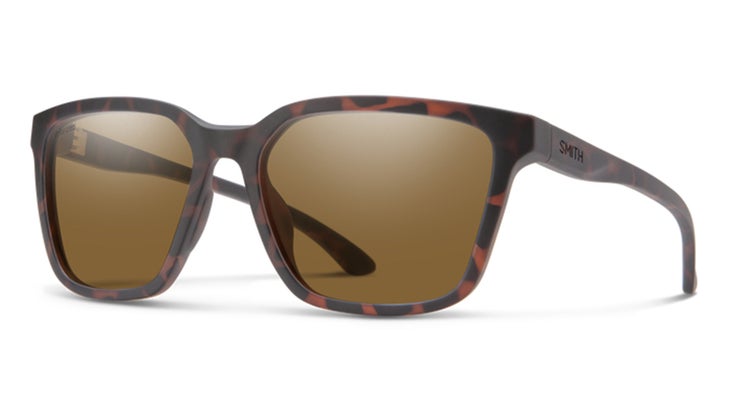
Smith Shoutout CORE Sunglasses
Sunglass maker Smith is one of the leaders in utilizing recycled plastics which would otherwise end up in the ocean. The brand currently offers a broad range of options with the Lowdown CORE, Eastbank CORE, and . All are made of recycled plastics and feature bio-based lenses and embossed logos (instead of stickers).
The Shoutout CORE model I’ve been testing weighs a skimpy 36 grams—that, combined with the non-slip nosepads and high-quality polarized lenses makes them great for running and other active use. The frame’s style also transitions seamlessly to around-town casual wear. The glasses come with a microfiber bag also made from recycled plastic bottles, and arrive in 100 percent recycled packaging.
Also consider: Sunski, and the UK’s Waterhaul, two of many other sunglasses companies now using more and more recycled plastics.
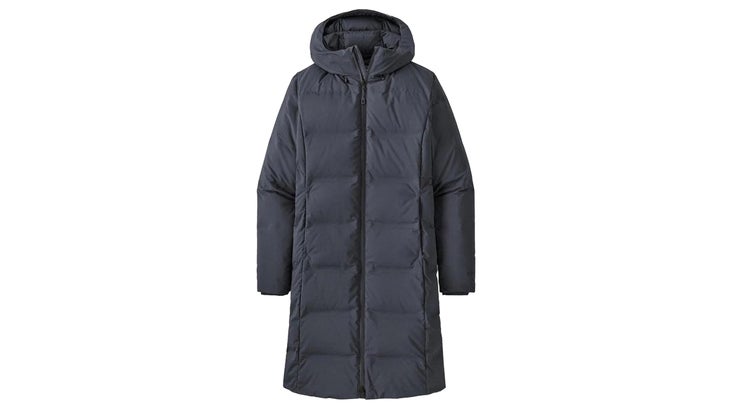
Patagonia Jackson Glacier Parka
Patagonia is the industry leader in environmental efforts, and this heavy-duty, waterproof, long-cut parka is made out of 100 percent recycled polyester that supports—an initiative that offers an income source for plastic bottle waste collection networks in low-income communities in Haiti, Taiwan, and Ghana. The program has diverted over 250 million plastic bottles from the environment since 2019. The jacket is also insulated with 100 percent recycled down reclaimed from other down products.
It hasn’t been cold enough in Boulder to test this bomb-proof jacket yet, but it feels like a coat I’ll be wearing on the sidelines of youth sporting events during late fall and early spring games, and while walking the dog in snow and sleet.
Also consider: Patagonia’s and other products (like the brims of) are now made out of NetPlus, recycled fishing nets.
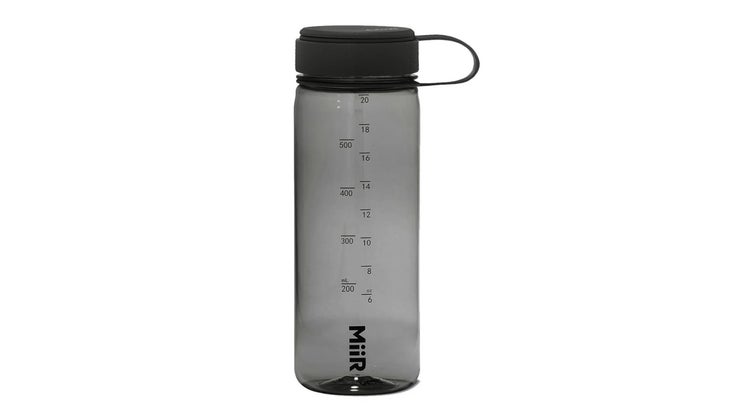
Miir Everywhere Bottle
This lightweight plastic water bottle (that fits in a car cup holder!) is constructed from a product called Tritan Renew, which is made out of 50 percent recycled plastic. (Miir says they tested a product made out of 100 percent recycled plastics and weren’t happy with their performance.) The lid and included splashguard of this bottle, however, are both made out of 100 percent recycled plastic.
I’ve been enjoying how lightweight this bottle is compared to stainless steel water bottles. Its 20-ounce size makes it easy to shove in the side of a pack or any bag, and its secure lid means that it won’t leak all over my stuff (fingers crossed). This also comes in a 33-ounce size.
Turn off the tap
There’s picking up trash, and there’s shopping with intention. But there’s also the larger problem of single-use plastics and the mass manufacturing of plastic in general. “Working to stop plastic before it gets into the ocean is great,” says Savage, “but we have to reduce how much plastic we’re making because it’s not just a litter problem.”
I feel like we can all make individual efforts on this front. For one thing, can we please eliminate single-use plastic bottles? Most public places have refilling stations, and a plethora of reusable bottles exist. On the less obvious front, using steel straws like from and , and reusable food storage boxes like these can help the greater issue.
Some cities, like , Nevada, and , Colorado, and , have refilleries—stores where you bring your own containers (or use theirs) to refill items like cleaning supplies, shampoo, and/or food. Wouldn’t it be great if more popped up around the country? Savage reminds me that 20 to 30 years ago, it was hard to find organic food, but these days even superstores have a wide offering. Hopefully we’re headed in a direction that minimizes single-use plastics.
In the meantime, I’ll be looking for more great products that help keep plastics out of the ocean. And when I’m enjoying said ocean, or riverfront, or anywhere that’s not a trash bin, I’ll do my best to dedicate a little time to beachcomb and treasure hunt for plastics.


